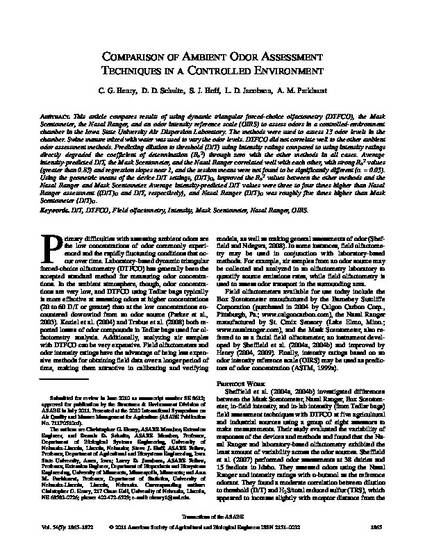
This article compares results of using dynamic triangular forced-choice olfactometry (DTFCO), the Mask Scentometer, the Nasal Ranger, and an odor intensity reference scale (OIRS) to assess odors in a controlled-environment chamber in the Iowa State University Air Dispersion Laboratory. The methods were used to assess 13 odor levels in the chamber. Swine manure mixed with water was used to vary the odor levels. DTFCO did not correlate well to the other ambient odor assessment methods. Predicting dilution to threshold (D/T) using intensity ratings compared to using intensity ratings directly degraded the coefficient of determination (Ro2) through zero with the other methods in all cases. Average intensity-predicted D/T, the Mask Scentometer, and the Nasal Ranger correlated well with each other, with strong Ro2 values (greater than 0.85) and regression slopes near 1, and the session means were not found to be significantly different (a = 0.05). Using the geometric means of the device D/T settings, (D/T)G, improved the Ro2 values between the other methods and the Nasal Ranger and Mask Scentometer. Average intensity-predicted D/T values were three to four times higher than Nasal Ranger assessment ((D/T)G and D/T, respectively), and Nasal Ranger (D/T)G was roughly five times higher than Mask Scentometer (D/T)G.
Available at: http://works.bepress.com/steven_hoff/66/

This article is from Transactions of the ASABE 54, no. 5 (2011): 1865–1872.